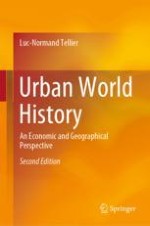2019 | OriginalPaper | Buchkapitel
The Topodynamic Model: Origin and Fallouts
verfasst von : Prof. Dr. Luc-Normand Tellier
Erschienen in: Urban World History
Aktivieren Sie unsere intelligente Suche, um passende Fachinhalte oder Patente zu finden.
Wählen Sie Textabschnitte aus um mit Künstlicher Intelligenz passenden Patente zu finden. powered by
Markieren Sie Textabschnitte, um KI-gestützt weitere passende Inhalte zu finden. powered by
